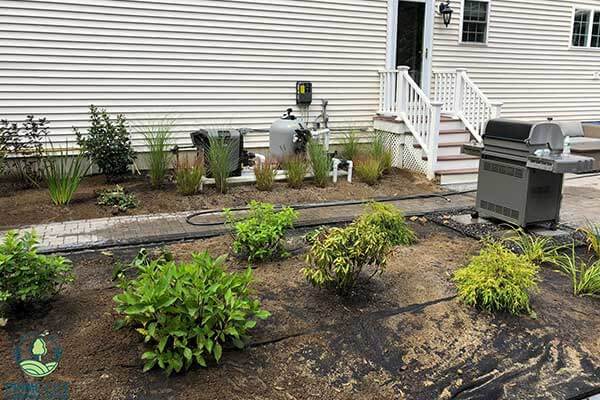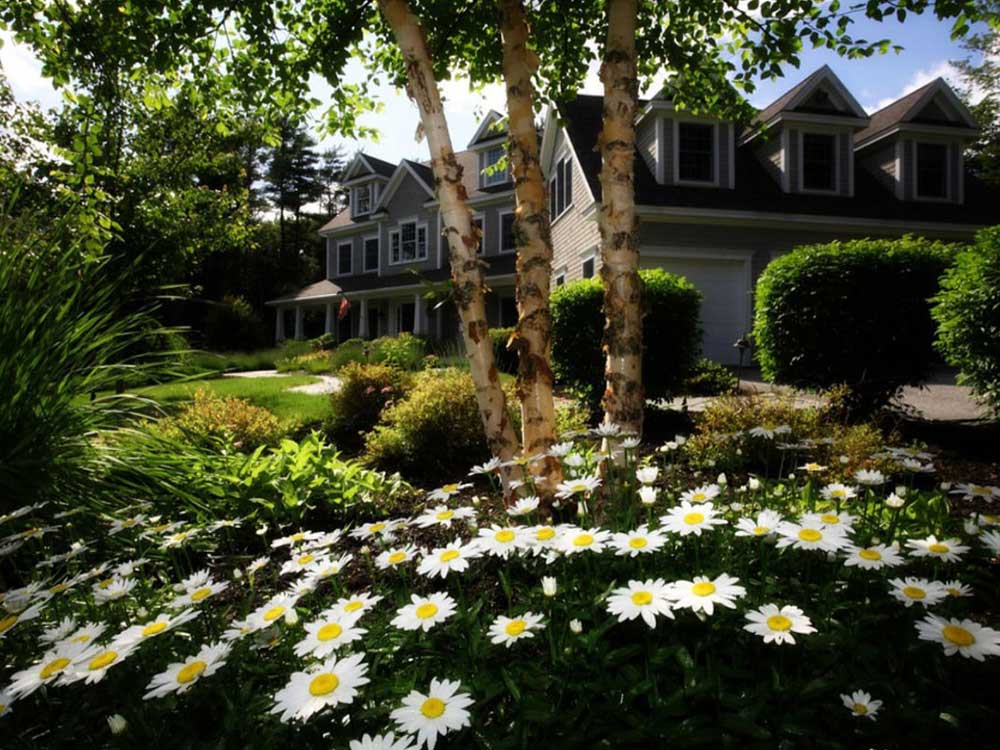You’ve been dreaming of the perfect garden for years: the kind of landscaping you want to spend time in, surrounded by the plants and flowers that make you feel joy and at ease.
But how do you create a space that you’ve been dreaming about when you’re not a garden designer? Sure, you’ve watched all the HGTV shows you can on the subject, but making your landscaping dreams a reality is something else entirely.
Here are 10 tips for designing the garden or landscaping you’ve always wanted:
- Consider your space
- Determine your style
- Decide what you want to accomplish
- Understand your local climate
- Establish your budget
- Visit your local nurseries
- Plan the garden
- Consider simplicity
- Consider maintenance
- Be strategic with planning
1. Consider your space.
Start by taking stock of what’s currently on your property. Depending on your existing garden (if any), the work ahead of you may be minimal or extensive.
Spend different times of the day in the space to understand everything about it, as it will be helpful later on.
Ask yourself:
- What types of hardscaping and landscaping do I already have that I can keep?
- What would need to be replaced?
- Where does the sun come in and what areas get the most sun exposure?
- What areas receive the most wind?
- What areas get more (or less) rainfall?
2. Determine your style.
Are you a more formal gardener, who prefers pristinely trimmed hedges and manicured plants? Or do you think of yourself as a naturalist, who likes more wild plantings?
Choose a theme or a style that best fits you - and your property - to help make your garden planning process seamless.

3. Decide what you want to accomplish.
Is your garden an oasis for relaxation? Or is it meant to be small and decorative, nestled next to the playset where your kids spend their time?
Do you plan to use the space for hosting backyard barbeques? Or do you intend to grow vegetables for your family?
Your ultimate garden or landscaping goals will be crucial for your plan.
4. Understand your local climate.
Not all plants are created equal when it comes to geography. It goes without saying that certain plants thrive in particular locations; but if you have your heart set on a certain flower that only likes a 9b planting zone and you live in a 5b zone, you’ll need to reconsider your options.
Choose native plants for your area and you’ll not only be more successful with your plantings, but you’ll be happier with the outcome of your garden too.
5. Establish your budget.
Like any home renovation or update, establishing your garden and landscaping budget will manage your financial expectations. The last thing you want when creating your dream garden is to be left with a giant and surprising bill at the end of the process.
6. Visit your local nurseries.
Stopping by a local nursery or two will help you accomplish a few things.
First, you’ll be able to confirm what you found in tip #4: the plants, shrubs, and flowers you prefer for your client are available in your local area.
Next, depending on your gardening knowledge, you’ll be able to get more information about potential plantings and get more specific for your plan.
Lastly, you’ll start to get a sense of what plants, landscaping, and hardscaping will fit into the budget you’ve allotted.
7. Plan the garden.
The time has come to officially plan out your garden. By now, you should have all the research and information you need to begin sketching out your dream garden.
Plan out the hard outlines of your garden space: where will any hardscapes go? Will you include seating anywhere?
Consider focal points: what plantings are the focus in your garden and where will they be?
Putting as much detail down on paper now will save a lot of potential replanting later.
8. Consider simplicity.
At its core, nature is beautiful in its simplicity. Don’t feel that you need to incorporate every idea you have in your perfect garden.
Instead, consider starting small and growing (no pun intended!) from there.
9. Consider maintenance.
One of the most overlooked issues when it comes to a garden? Maintenance.
There are many plants or landscaping choices that make for a lot of maintenance down the road. From trimming to weeding to fertilizing, there are a number of maintenance considerations to make during the planning process.
10. Be strategic with planting.
In addition, don’t forget to think about how shrubs, trees, and flowers will grow. Get educated on the size each plant grows to and give it plenty of room.
What’s more: think about how each plant will grow amongst the others. Which flowers will be shaded by a growing tree nearby? What shrubs will end up encroaching on your new hardscape if not properly maintained?
Follow these ten tips to make your gardening dreams a reality. For help in the greater Buxton, Maine area with your lawn and landscaping needs, contact us at Prime Cut Landscaping & Lawn Care today!






